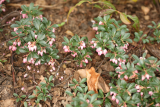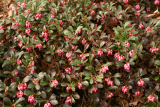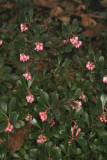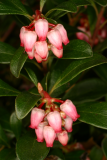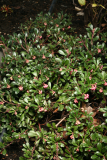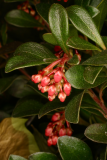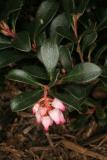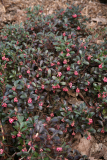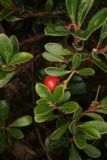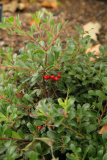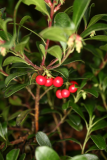Additional notes (click to expand)
Medicinal
Internally for kidney and bladder stones, cystitis, urethritis, prostatitis, arthritis gout and oedema’
Austin, Daniel, F. (2004) Florida Ethnobotany. CRC Press.
Inuit, Chinook, Cree and Chippewaians aused it as a tobacco substitute. Orally for vomiting, purging, bloody and green urine, reduced cardiac output (although this latter seems an odd piece of knowledge for native Americans over a century ago).
Milspaugh, C.E. (1974) American Medical Plants
For treating Nephritis.
London Pharmacopoeia (1763)
As Arbutus uva-ursi it was used as an 'astringent tonic' for treating calculus & 'catarrhus vesicae'
Stephenson, J. & Chrchill, JM (1836) Medical Botany . London, John Churchill
Traditional Herbal Medicine Registration (THMR).
Nomenclature
bear-grape (Source: Dict Gard )
bearberry (Source: World Econ Pl )
hog-cranberry (Source: Dict Gard )
kinnikinnick (Source: F Pacif NW )
mealberry (Source: Dict Gard )
mountain-box (Source: Hortus 3 )
sandberry (Source: Dict Gard )
upland-cranberry (Source: Websters Dict )
uva-ursi (Source: Herbs Commerce ed2 )
gayuba (Source: F Int Apico ) [Spanish]
Syn. = Arbutus uva-ursi L. (basionym)
Other use
Used by Inuit, Chinook, Cree and Chippewaians as a tobacco substitute.
Milspaugh, C.E. (1974) American Medical Plants
Geographical distribution
- Asia-Temperate, Caucasus
- Asia-Temperate, Russian Far East
- Asia-Temperate, Siberia
- Europe, Eastern Europe
- Europe, Middle Europe
- Europe, Northern Europe
- Europe, Southeastern Europe
- Europe, Southwestern Europe
- Northern America
- Southern America
Arctostaphylos uva-ursi ( L. ) Spreng. 'Vancouver Jade'
Family: ERICACEAEGenus: Arctostaphylos
Species: uva-ursi ( L. ) Spreng.
Cultivar: 'Vancouver Jade'
Common names: Bearberry
Distribution summary: Eurasia, Northern America, Guatemala
Habit: Sub-Shrub
Hardiness: H5 - Hardy; cold winter
Habitat: Dry, grassy slopes amongst rocks , usually on calcareous soils
Garden status: Currently grown
Garden location: North America (A)
Flowering months: March, April
Reason for growing: Medicinal, toxic, traditional herbal registration
.JPG)
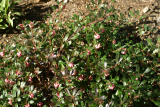

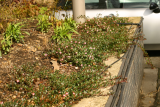
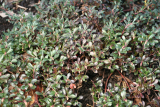

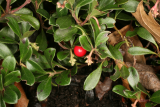
.JPG)

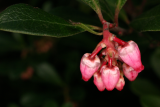
.JPG)

.JPG)
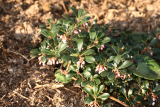
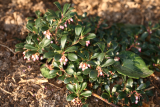
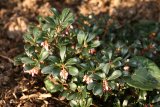
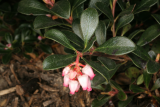
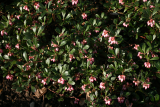
.JPG)
.JPG)
.JPG)
